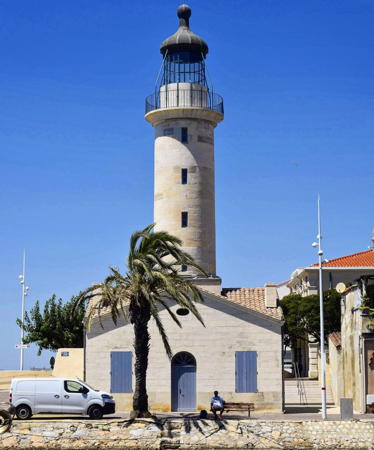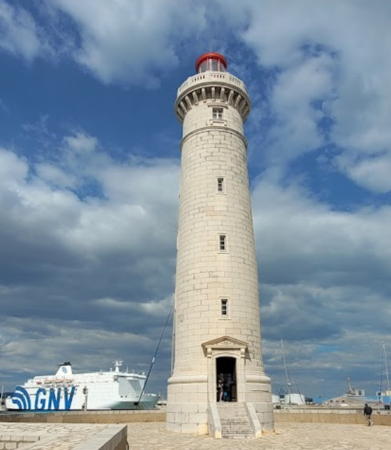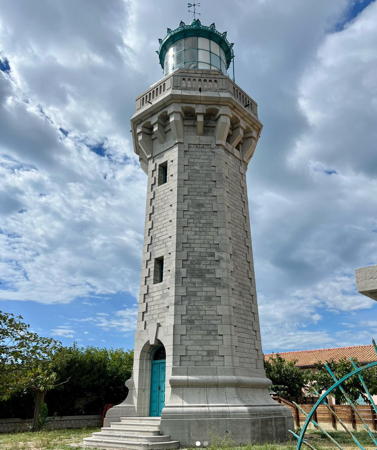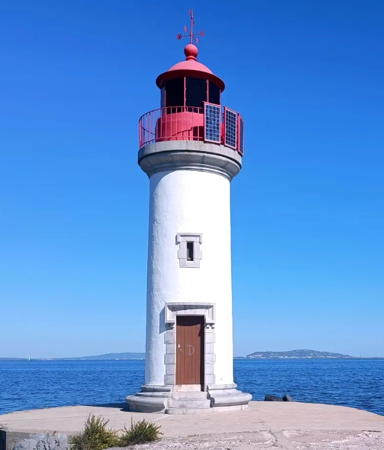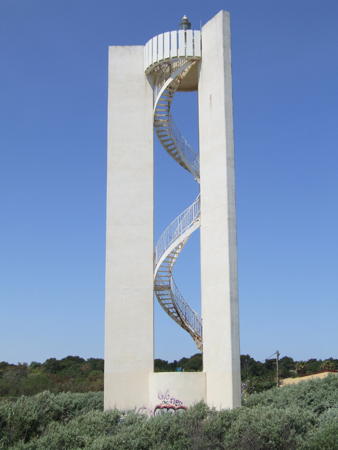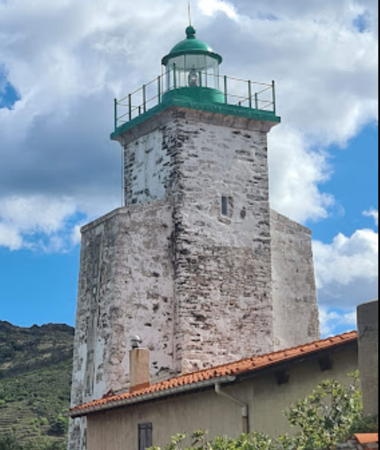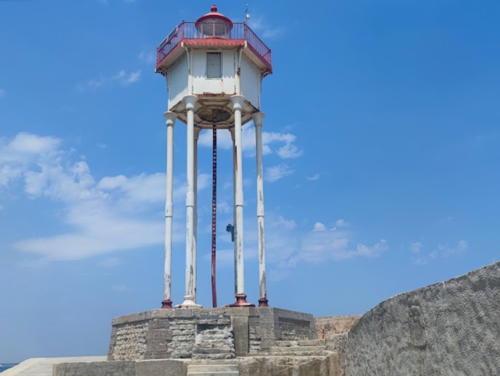France (officially the French Republic, République française) has coasts facing south on the Mediterranean Sea, west on the open Atlantic Ocean, and north on the English Channel (La Manche in French). Long a leader in lighthouse design, France has scores of famous and historic lighthouses. And it was a French engineer and physicist, Augustin-Jean Fresnel (1788-1837), who invented the powerful and beautiful lenses used in lighthouses around the world.
For local government mainland France is divided into 94 departments (départements), which are grouped for administrative purposes into 12 regions (régions). This page includes lighthouses of the southernmost part of mainland France in the former region of Languedoc-Roussillon. The coast of this region includes the four départements of Gard, Hérault, Aude, and Pyrénées-Orientales. The first three departments fall within the historic province of Languedoc, so-called because its inhabitants spoke (and many still speak) the Occitan language (langue d'oc), which is related to Catalan. Pyrénées-Orientales corresponds roughly to the former province of Roussillon, which was part of the principality of Catalonia until it was captured by France in 1659. Here Catalan itself is often spoken. In 2016 the region of Languedoc-Roussillon was merged with Midi-Pyrénées to form a larger region called Occitanie (Occitania in English).
The coast of Languedoc-Roussillon faces east or southeast on the Golfe du Lion, a broad bight of the Mediterranean Sea. The coast is mountainous in the south, where the Pyrenees mountains come down to the sea, but it is a relatively low coast elsewhere, with few major ports. (The gulf acquired its name in the Middle Ages for reasons not understood, since there are no lions in France. In Roman times it was called the Gallic Bay, Sinus Gallicus.)
The French word for a lighthouse, phare, is often reserved for the larger coastal lighthouses; a smaller light or harbor light is called a feu (literally "fire," but here meaning "light") or a balise (beacon). The front light of a range (alignement) is the feu antérieur and the rear light is the feu postérieur. In French île is an island, cap is a cape, pointe is a promontory or point of land, roche is a rock, récife is a reef, baie is a bay, estuaire is an estuary or inlet, détroit is a strait, rivière is a river, and havre is a harbor. A lighthouse is called a far in both Occitan and Catalan. In Catalan illa is an island, capa is a cape, punt is a promontory or point of land, roca is a rock, badia is a bay, riu is a river, and port is a harbor.
Aids to navigation in France are maintained by the Bureau des Phares et Balises, an agency of the Direction des Affaires Maritimes (Directorate of Maritime Affairs). The Directorate has four regional offices called Directions Interrégionale de la Mer, or DIRM, at Le Havre, Nantes, Bordeaux, and Marseille. Mediterranean lighthouses fall under the Marseille office, DIRM Méditerranée.
ARLHS numbers are from the ARLHS World List of Lights. FR numbers, where available, are the French light list numbers. Admiralty numbers are from volume E of the Admiralty List of Lights & Fog Signals. U.S. NGA List numbers are from Publication 113.

Pointe de l'Espiguette Light, Grau-du-Roi, Gard, February 2024
Instagram photo by coolhand776178


